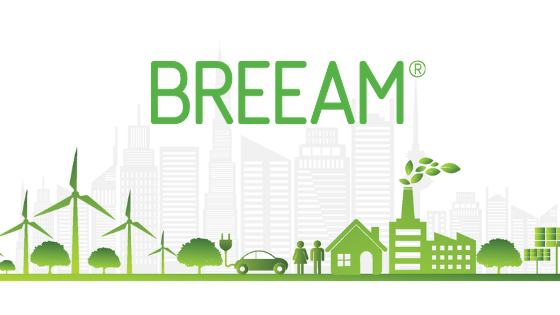Thursday, September 10, 2020
Improve BREEAM Rating With Solar Window Film
Using solar window film to improve BREEAM ratings
A guidance note for developers, property and sustainability consultants
BREEAM (Building Research Establishment Environmental Assessment Method) is a well-established rating tool in the assessment of sustainable buildings.
According to the World Green Building Council (GBC) 2013 report, The Business Case for Green Building , BREEAM certification can increase rental rates for buildings by up to 24.9% compared to conventional, building code-compliant buildings. In addition to retaining the long-term value of a building, BREEAM certified buildings also address a range of important health and well-being issues for occupants. The World GBC’S 2016 report, Building the Business Case: Health, Well-being and Productivity in Green Offices, further highlights the global momentum behind green buildings that are healthy.
The World GBC’s 2016 report provides best practice examples of healthy, green offices, showing that employers who care about the environmental impact of their buildings as well as the health and well-being of their staff, and take action to improve the quality of the workplace, are rewarded by improved productivity and loyalty – which can be worth many times more than their investment.
BREEAM can be used throughout the various lifecycle stages of a building, from new construction, to refurbishment, as well as measuring existing energy consumption and health and well-being when buildings are in use. The assessment works by offering credits against 9 environmental categories known as assessment issues. The more credits achieved, the higher the rating – ranging from pass, good, very good, excellent to outstanding.
Increase BREEAM credits through the specification of solar window film
Solar window film can help support the attainment of a range of BREEAM credits through improvements to building thermal and operational energy performance, alongside the well-being and productivity of occupiers. This guidance note highlights where such credits are available.
Energy Category (up to 13 credits)
Solar window film can help support the achievement of up to thirteen BREEAM credits in the Energy category. Modelling the impact of film in a Building Information Model (BIM) or energy model before installation, as part of a design solution, can support an improved BREEAM rating. There are also practical benefits to such an approach – it is better to understand the effect of film (or any technology) on a building before its installation. Solar control films help reduce excess heat in the summer, and low-emissivity (Low-E) films help reduce heat loss in the winter. These passive properties contribute towards reducing building energy consumption and associated carbon emissions. They minimise reliance on active building services systems.
Benefits include:
- Increased energy efficiency
- Energy savings on heating and cooling
- A potential solution for historic buildings, or buildings where it is not appropriate (or too expensive) to install new glazing
Solar window film can help support the achievement of up to four BREEAM credits in the Health & Well-being category. Bright natural light can create un-comfortable conditions due to glare and reflections on computers, TV screens or other electronic devices. The neutral appearance of solar window film provides a more natural level of daylight inside buildings, providing comfort and supporting well-being in the workplace.
Benefits include:
- Glare reduction
- Optimized working conditions
- Reduced eye-fatigue
- Increased productivity
Solar window film can help support the achievement of up to seven BREEAM credits in the Materials and Waste Categories. The embodied carbon and resources used is significantly less in solar film than in alternative new glazing systems. Using solar films therefore can help contribute to lowering the environmental impact of a building, through the re-use of existing materials, reduced demolition/construction waste, whilst also supporting the sustained use of the building in future changing climates.
Benefits include:
- Lower embodied carbon
- Lower capital costs than new glazing systems

Can't find what you're looking for?
We'll find you the
right solution
Please let us know the details of your problem and we'll be in touch with our recommendation.







